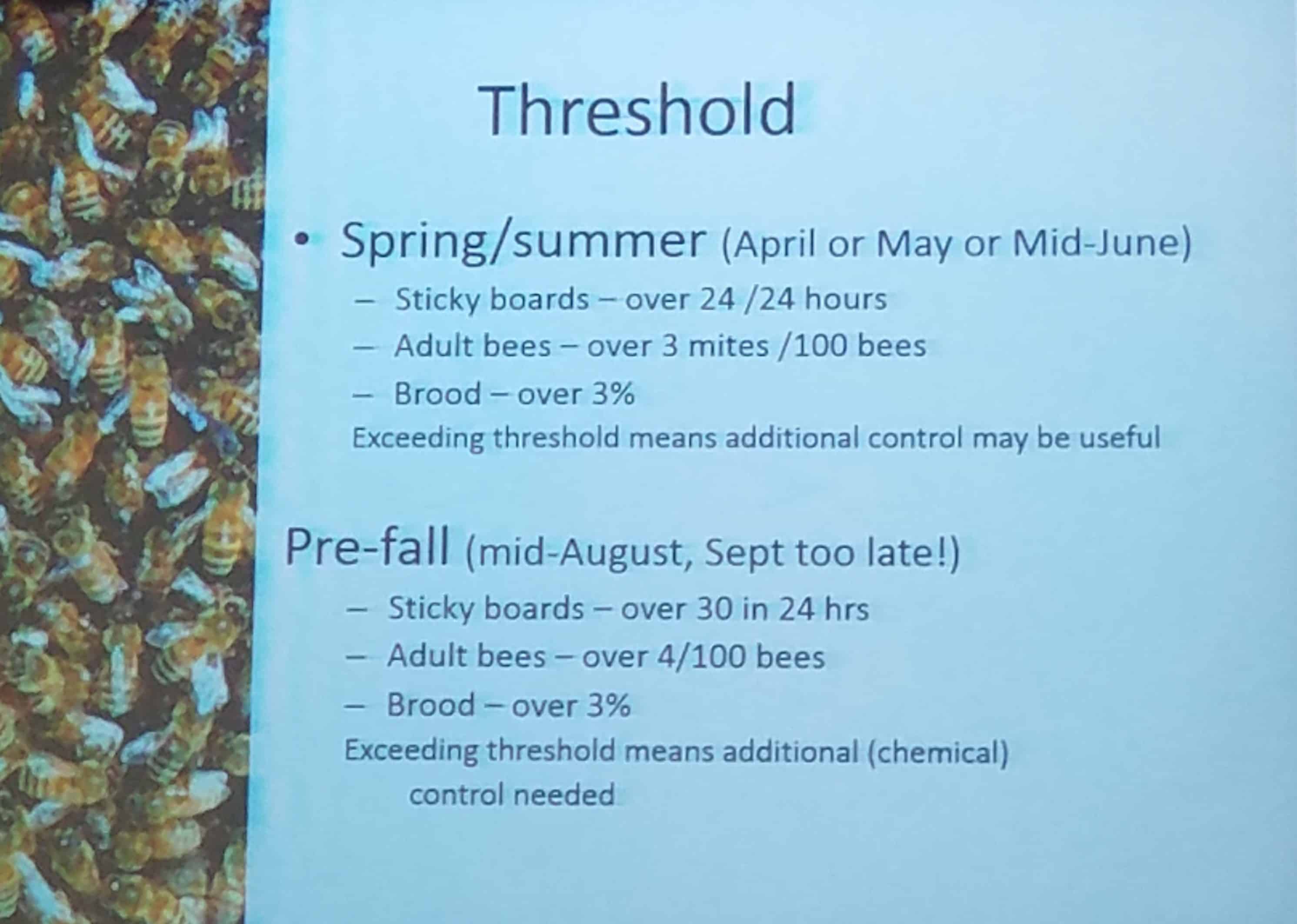Actually this month's letter is being written in Durango, Colorado. Mary and I were on vacation out here, visiting her brother-in-law, when unfortunately Mary broke her leg. She is currently in rehab and doing well, but our vacation out here has been extended while she recovers enough to travel back home.
Our vacation actually started with the Heartland Apicultural Society meeting in Evansville, Indiana, a very nice three-day conference. The attached picture is one of the slides from the conference and gives the recommendations for Varroa treatment thresholds (at least for Ohio). Not much has changed here.
The supposed endangerment of honey bees was a big topic at the conference. In a nutshell, honey bees as a species are not endangered; what is endangered is beekeeping as we know it. While wild honey bee colonies are doing well, annual colony losses remain at the 30 to 40% level for both hobby and commercial beekeepers.
Also mentioned was how modern farming with vast fields of corn and soybeans creates virtual deserts for beekeeping. We certainly saw this during our drive from Evansville to Durango, Colorado. The field size in modern agriculture is enormous, and very little of it is crops of interest to bees. We didn't start to see fields of alfalfa until we got into into western Kansas; these were the first crops we saw of interest to bees.
Durango does have beekeeping. I found a local store called Honeyville that has all manner of bee products (including mead). From them, I learned of the local beekeeping association, and if we stay here long enough, I'll get to go to one of their meetings.
Back at home in Dothan, fortunately, bees largely take care of themselves. I did have to ask one of my beekeeping friends to pull the Apivar strips out of my hives, as I originally expected to be home in time to pull the strips myself. I guess I'll find out more when I get home.
And that's the news.
-Bill Miller

